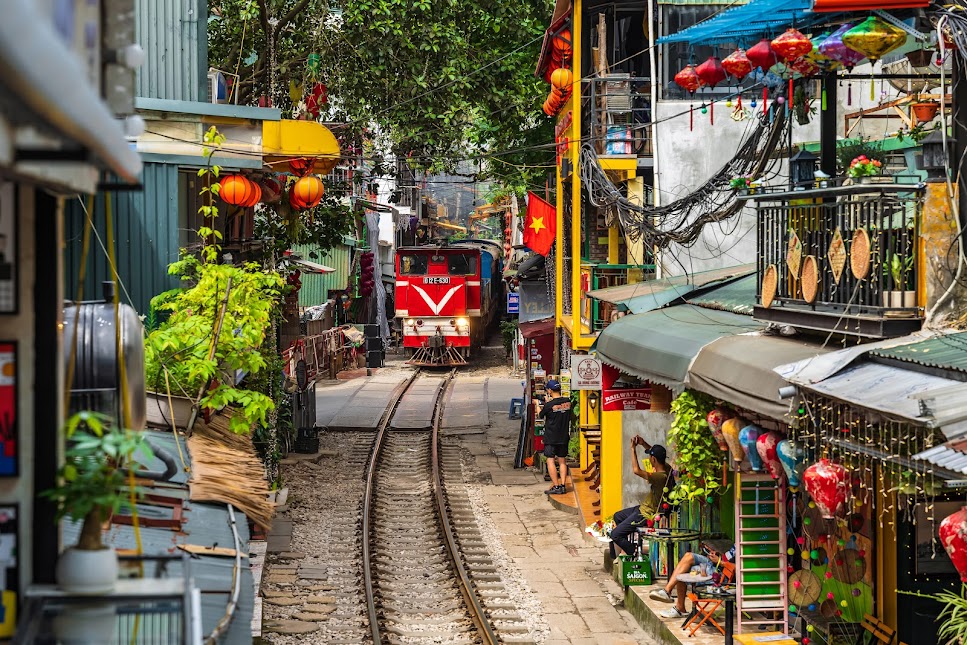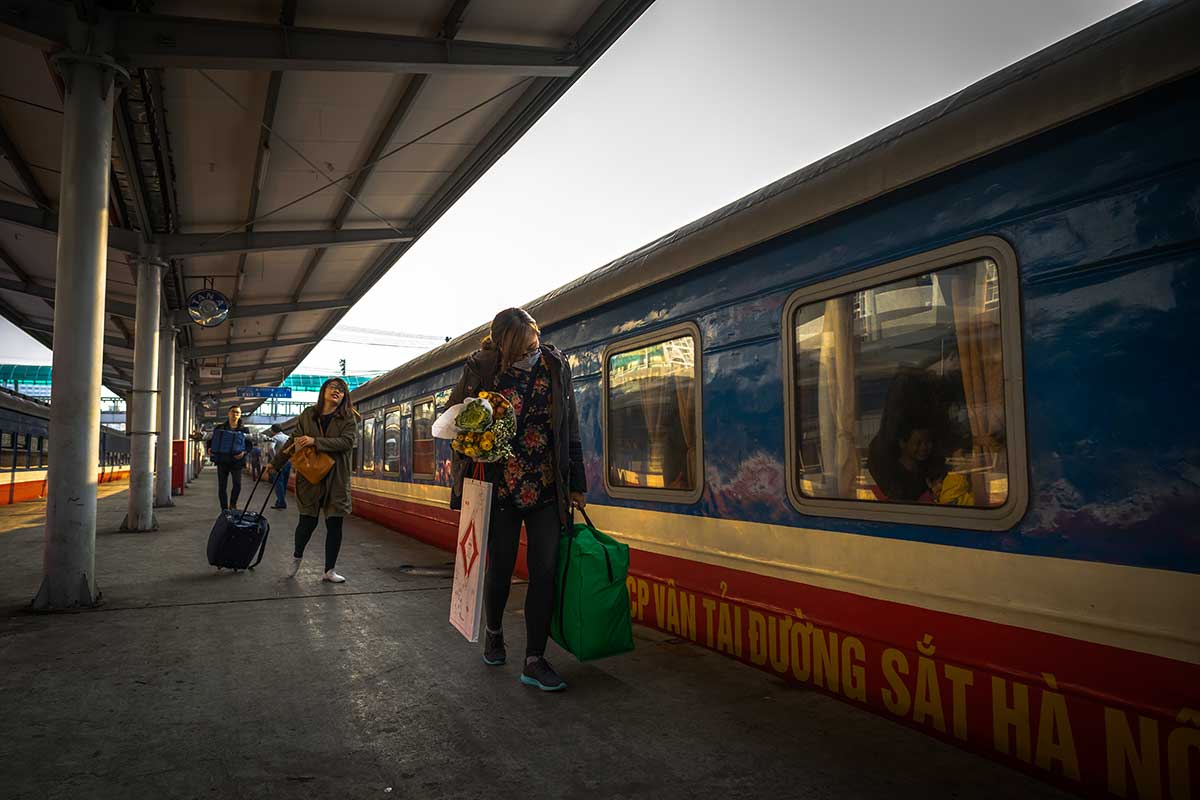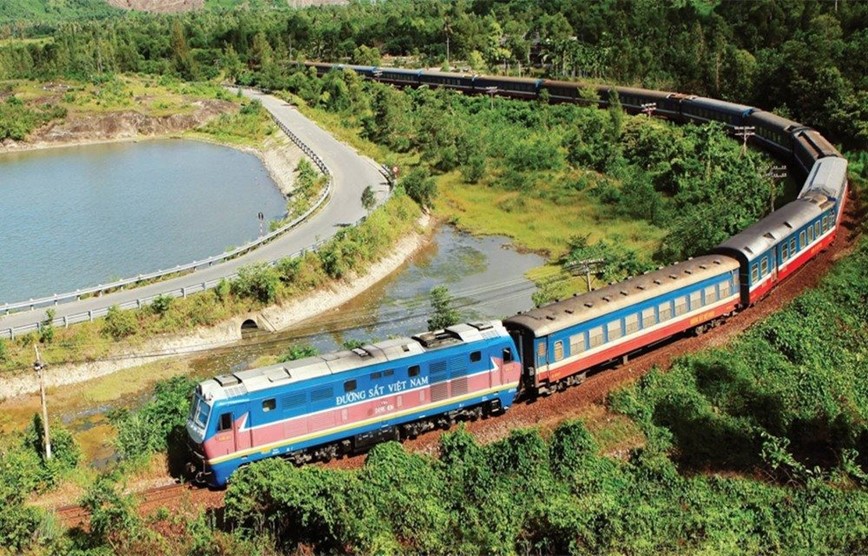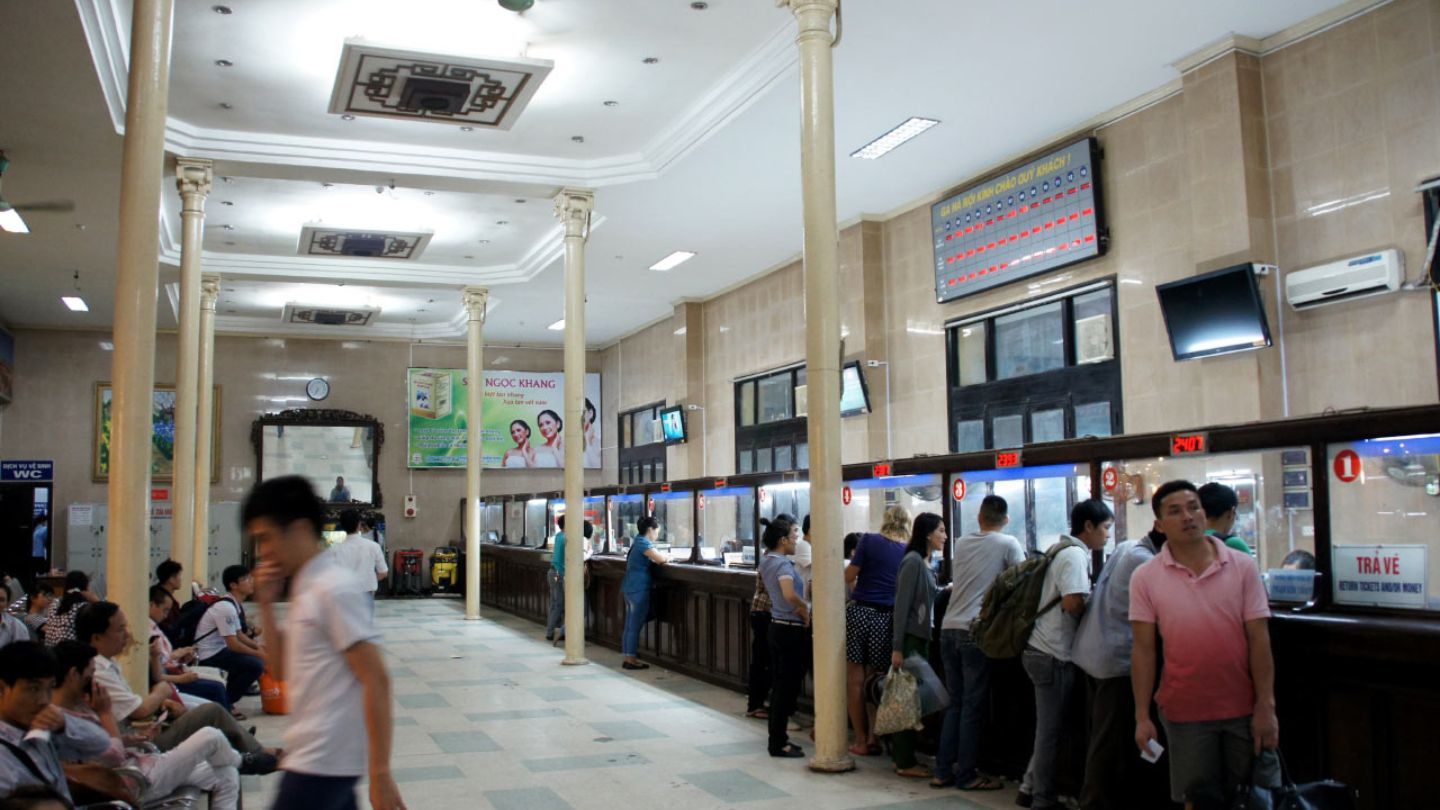
Hanoi Station: The gateway to Vietnam’s capital and its historical significance.
Hanoi Station is not just a railway station. It is a witness to history, a witness that has been mostly silent. All the trains that have left this station have left with memories and dreams, and with them, the evolution of a nation. Hanoi Station, in the center of Vietnam’s capital city, is a bridge from the past to the present, and a gateway to journeys near and far.
Table of Contents
Toggle
1. Hanoi Station and the Story of Its Historic Tracks
A part of the Indochina railway system, Hanoi Station was built in 1902 during the French colonial era. It was connected to different provinces of Vietnam and even to Laos and Cambodia. At that time, railways were not only a means of transportation but also represented the power and industrial progress that the French brought to Indochina.
This progress was evident in the modernization of the infrastructure, for instance, construction of steel railway bridges, station facilities, and a systematic railway arrangement which enhanced connectivity. The rail system selected better and faster trade routes to export agricultural and raw materials like rice, rubber and coal to the global market. Also, new locomotive technology was introduced which replaced traditional forms of transportation such as ox carts and boats and hence enhanced efficiency and economic development. The railway system also accelerated urbanization; the cities on the rail lines, therefore, emerged as economic hubs, creating employment and contributing to the modernization of Vietnam’s transportation infrastructure.
The original station was built in classic French architecture, with a grand façade, large glass panels, and arched windows. However, history has not treated this structure well. Hanoi Station was greatly damaged during the American bombing campaigns in 1972. It was then rebuilt after the war, but while the two wings still maintained the colonial charm, the central section was designed in a more modern style.
Read more: The History of Railway In Vietnam: From Basic Transport to Classy Indulgence

The challenges and changes are evident, and so is Hanoi Station, the heart of Vietnam’s railway network and a link to every part of the country. The trains that leave from here do not only bring people, but also stories, emotions, and even time itself.
2. A Strategic Location Connecting the Capital
The location of Hanoi Station at 120 Le Duan Street, Hoan Kiem District, places it right in the heart of the city. This makes it a central part of Hanoi’s urban fabric, fitting in with the pace of the city. The location is also convenient, as it is close to important places like Hoan Kiem Lake, the Old Quarter, and historical areas, all within minutes of the station. Furthermore, travelers can easily go to the Temple of Literature, one of the oldest universities in Vietnam and a symbol of the country’s educational heritage, or visit Hoa Lo Prison, a historical site that provides insights into the country’s past. For those who want to experience the culture, the Vietnam Fine Arts Museum and the Vietnam National History Museum are also nearby, displaying the artistic and historical collectibles of the nation.

Hanoi Station does not have the sleek, modern appearance of many railway stations in developed countries; instead, it exudes nostalgia. The continual flow of passengers, the voices of announcements ringing throughout the hall, and the sound of trains leaving at dawn with their whistles make for a place that cannot be replaced.
3. Hanoi Station in the Cultural and Historical Landscape
Not only is Hanoi Station a crucial transport hub, it is also culturally significant. Nostalgia can be felt by the old train carriages, the street lamps’ glow on tiled platforms, and the familiar sound of morning departures.

The coffee shops are located right beside the station and invite visitors to enjoy a cup of joe while observing the surroundings. Some cafés provide the amazing experience of being only a few meters from the tracks and seeing the trains go by, something that is both exciting and personal, connected to the daily life of Hanoi.
4. Journeys and Destinations
The trains from Hanoi Station are trains that ride through the cultural and historical backbone of Vietnam and are transports that allow people to not only travel from one place to another but also to experience the heart of the country. These trains are not just a means of transportation; they are travelling storytellers, which connect the generations and traditions from the capital city to the countryside and to the coastal areas.

Some of the most culturally significant routes include:
- Hanoi – Lao Cai: This journey takes you to the highlands of northwest Vietnam and is surrounded by the H’Mong and Dao people, who have kept their traditions until today. The train passes through mountains, terraced rice fields, and remote villages, giving a taste of a culture that has not been changed by the modern world.
- Hanoi – Hue – Da Nang: This route connects the North and Central parts of Vietnam and runs through the historical region. Hue, the capital of the ancient Nguyễn Dynasty, still resounds with its splendor; its citadel and royal cuisine testify to this civilized era. In the south, Da Nang reveals its coastal beauty, along with the mystical town of Hoi An, which was a major trading port between the two worlds for many centuries.
- Hanoi to Saigon: This historic route stretches for more than 1,700 km and is a testament to Vietnam’s spirit. It was once the line that divided the country during the war, and today it is a lifeline, which carries people, families, workers, and dreamers between the two major economic and cultural hubs of the country. The train ride is also fascinating as it chugs along through vast fields of green, over bridges that span rivers, and through historical towns.
This is because the trains in Vietnam are not only a means of transport but also a journey through the heart of the country. The routes they follow are not just milestones on the way, but the very places and stops along the way; the sights and smells, the atmosphere, and the people’s attitude are all different. The train ride is not only about covering the distance; it is about experiencing the beauty and complexity of the land and its people.
Each journey from Hanoi Station is more than just a physical passage—it is a journey into Vietnam’s soul, where landscapes, stories, and cultural legacies unfold with every mile.
5. Booking Tickets and Travel Tips from Hanoi Station
5.1. How to book tickets
Booking a train ticket from Hanoi Station is simple, with both in-person and online options available. Travelers can buy tickets at the station or conveniently book through banking apps and official railway websites. Below is a quick guide to help you secure your seat with ease.
- Traditional In-Person Purchase at the Station: Tickets can be bought directly from Hanoi Station ticket counters. It is wise to get there early, particularly if one has to travel during the peak season, to get ideal seating and lodging.

- Online Booking Through Banking Applications: This has led to the development of train ticket booking services by various mobile banking applications in Vietnamese banks.
- Via Official Railway Websites: The Vietnam Railways Corporation provides an online booking service for passengers to choose the type of service and seat, and to make payments.

5.2. Ticket Retrieval
After booking, obtaining your physical ticket (boarding pass) is crucial:
- E-Ticket Presentation: For online bookings, passengers can present the e-ticket directly from their mobile device during boarding.
- Self-Printing: Post-booking, an email confirmation is sent, allowing travelers to print their tickets at their convenience.
- Station Retrieval: Using the provided booking code or QR code, tickets can be printed at designated kiosks or counters within the station.
5.3. Required Documentation
- Adults: Valid ID such as a National ID card, passport, or any legally recognized photo identification.
- Children (Under 6): Original or photocopy of the birth certificate or passport. If unavailable, children under 112 cm in height are generally exempt from documentation.
- Children (6 to 10): Original or photocopy of the birth certificate or passport. In the absence of documents, a height under 132 cm is acceptable.
- Students: Valid student ID along with a recognized photo ID.
- Seniors: Any legally recognized photo ID.
5.4. Pre-Departure Recommendations
- Time of Arrival: It is advisable to be at the station about 30–60 minutes before the departure, especially during holidays or peak hours. This way, there are no delays with check-in and other possible problems.
- Accurate and Relentless Information: Make sure that the data provided in the ticket, e.g., the name and ID number, are compatible with the passenger’s identity documents in order to avoid problems during the boarding process.
- Ticket Control: You should keep your ticket with you, as train personnel may request it during the ride.
- Stay Informed: Pay attention to the station announcements for information about changes in the departure time or platform of your train.
- Luggage Regulations: Familiarize yourself with the train’s baggage policies to avoid any inconveniences.
- Safety Protocols: Adhere to safety guidelines, especially concerning prohibited items like flammable substances.
For over a century, Hanoi Station has been strong, sitting through the years and witnessing Vietnam’s history and her people. It has been more than just a railway terminal, it is Hanoi’s enduring symbol, the past departing in every train, and every journey containing a part of history.
In this regard, we continue to honor this legacy by choosing Hanoi Station as the starting point of our journey. When departing, it is not just a trip but a passage through time, tradition and the rich heritage of Vietnam through Hanoi Station with SJourney.
Read more:
Hue Station: A stop that connects travelers to Vietnam’s imperial past.
Nha Trang Station: The coastal charm and its role in connecting tourism.
Saigon Station: The bustling end of the line and the heart of southern Vietnam.












